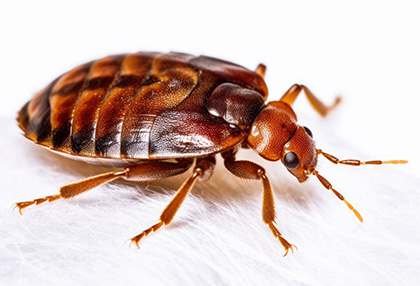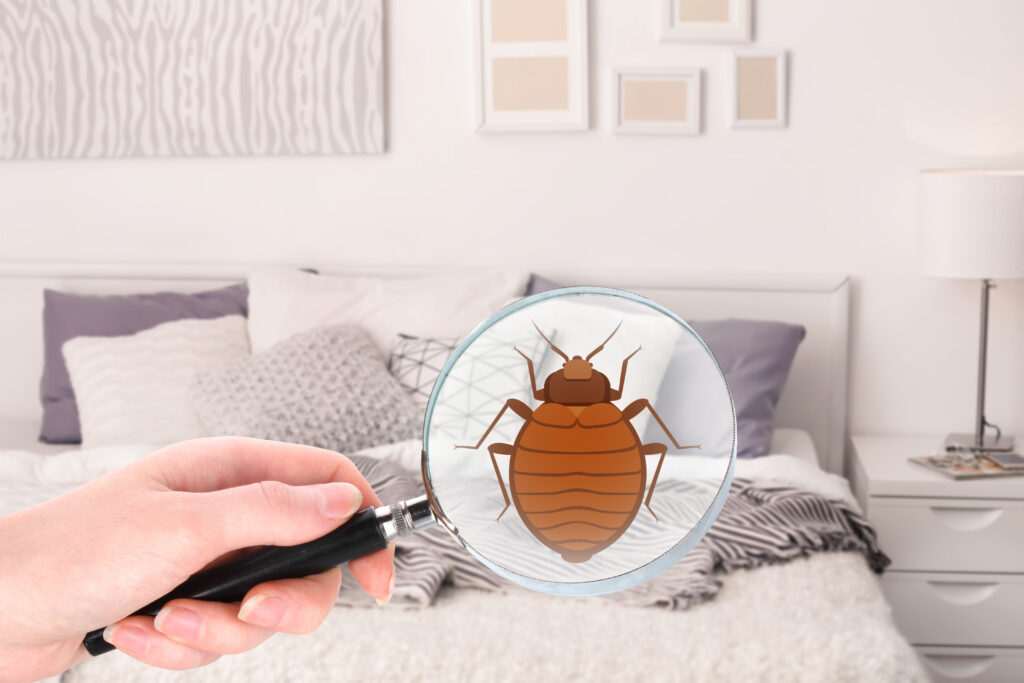Affordable Bed Bug Heat Treatment for Quick and Effective Results
Affordable Bed Bug Heat Treatment for Quick and Effective Results
Blog Article
Obtain Enlightened Regarding the Types of Insect Control Techniques and Their Advantages for House Owners
Recognizing the different insect control techniques available to homeowners is necessary for effective parasite administration. Property owners that are educated can make critical options that not only address pest concerns but likewise enhance the general high quality of their living setting.
Chemical Insect Control Methods
Chemical parasite control methods are a critical component of integrated parasite monitoring methods for homeowners seeking efficient solutions to pest invasions. These methods include the application of chemical materials designed to eliminate or hinder pests that endanger personal residential or commercial property, health and wellness, and comfort. Common chemicals utilized consist of pesticides, herbicides, rodenticides, and fungicides, each tailored to target particular insects.
The key benefit of chemical insect control is its fast performance; several formulations give immediate results, reducing pest populaces significantly in a short time. Additionally, breakthroughs in chemical formulations have actually caused items that are much more eco-friendly and have lower toxicity levels for non-target microorganisms when applied properly.

Organic Insect Control Techniques
All-natural parasite control techniques have actually gotten prominence as homeowners seek more secure and more lasting options to standard chemical strategies. Biological bug control techniques make use of natural predators, bloodsuckers, or microorganisms to handle insect populations successfully. This technique is not only ecologically pleasant however also decreases the danger of injury to non-target varieties, consisting of advantageous insects and wildlife.
Among one of the most typical biological control techniques involves presenting natural predators into the environment. As an example, ladybugs can be used to regulate aphid populations, while nematodes target soil-dwelling pests like grubs. In addition, parasitoids-- microorganisms that live on or within a host-- can be used to control particular insect varieties by laying eggs inside them, inevitably resulting in their death.
An additional technique is the usage of biopesticides, which are derived from all-natural materials such as plants, minerals, or microorganisms (bed bug exterminator). These products can properly target pests while positioning minimal danger to people and pets. On the whole, biological bug control methods supply home owners with an effective means of bug monitoring that straightens with environmental concepts, promoting a healthier living atmosphere while reducing dependence on artificial chemicals
Mechanical Parasite Control Approaches
Mechanical insect control approaches encompass a variety of approaches that physically avoid or eliminate parasites without making use of chemicals. These strategies are specifically beneficial for home owners seeking eco friendly choices while guaranteeing the security of their living areas.
One usual technique is using obstacles, such as webs, traps, and screens, which protect against parasites from getting in homes or specific areas. Installing window screens can successfully maintain pests out, while using physical barriers around gardens can prevent bigger pests like deer or bunnies. Furthermore, mechanical catches developed for rodents can catch and get rid of these parasites without the demand for toxic compounds.
An additional effective technique includes the use of vacuum cleaners and mops to get rid of parasites straight from surface areas. Routine cleaning and maintenance can considerably lower pest populations by getting rid of food resources and concealing places. In addition, employing tools like ultrasonic parasite repellents can prevent various insects via sound waves that are undesirable to them yet inaudible to human beings.
Social Insect Control Practices
Social parasite control practices concentrate on customizing the setting and management techniques to create conditions that are less favorable to pest problems. These techniques are essential in keeping a balanced environment and lowering the dependence on chemical treatments. By changing agricultural methods, home owners can successfully hinder parasites while advertising plant health.
One usual strategy consists of plant rotation, which disrupts the life process of parasites by altering the kinds of plants expanded in a specific location (bed bug exterminator). This not only reduces pest populations yet additionally improves dirt health and wellness. Furthermore, intercropping-- planting varied plants in closeness-- can puzzle pests and lower their capability to locate their favored host plants
Water management is another critical facet of cultural techniques. Proper watering methods can avoid standing water, which works as a breeding ground for insects and various other description insects. Preserving sanitation in and around the home, such as on a regular basis getting rid of debris and food waste, can considerably minimize parasite attraction.
Incorporating these social techniques right into an extensive bug monitoring strategy allows house owners to develop a setting that normally hinders parasites, thereby improving the effectiveness of other control methods while promoting lasting horticulture and landscape design.

Integrated Pest Monitoring Approaches
Integrated Bug Management (IPM) stands for a holistic strategy that combines different strategies to effectively handle pest populations while minimizing environmental effect. This method incorporates organic, cultural, physical, and chemical methods to accomplish lasting pest control. By evaluating pest populaces and their all-natural enemies, IPM highlights tracking and determining pests before carrying out control actions.
One of the core principles of IPM is the use of thresholds, which establish the level of bug task that necessitates treatment. This makes certain that therapies are used just when essential, lowering the dependence on chemical pesticides. Biological control methods, such as presenting all-natural predators or parasites, operate in conjunction with social techniques like crop rotation and habitat adjustment to interfere with pest life process.
Moreover, IPM motivates using least-toxic chemical options when treatment is necessary, focusing on products that posture very little threat to non-target my link microorganisms and the environment. For property owners, adopting IPM comes close to not only boosts the efficacy of parasite management but likewise promotes a healthier living setting, promoting biodiversity and lowering chemical direct exposure. Ultimately, IPM equips homeowners to make educated decisions that balance parasite control with ecological duty.
Final Thought
In final thought, understanding the numerous parasite control techniques encourages property owners to make enlightened decisions relating to pest management. Each method-- chemical, organic, mechanical, social, and integrated bug monitoring-- offers distinctive benefits that cater to various demands and choices.
Recognizing the different parasite control methods available to property owners is essential for reliable parasite monitoring.Chemical parasite control pest exterminator approaches are a crucial component of integrated pest management strategies for property owners seeking reliable remedies to pest problems. Overall, organic bug control strategies provide homeowners with a reliable methods of insect management that straightens with eco-friendly principles, promoting a much healthier living environment while reducing dependence on synthetic chemicals.
Social insect control methods concentrate on customizing the setting and administration techniques to produce problems that are less favorable to pest problems.In conclusion, understanding the different insect control methods empowers home owners to make enlightened choices relating to pest monitoring.
Report this page